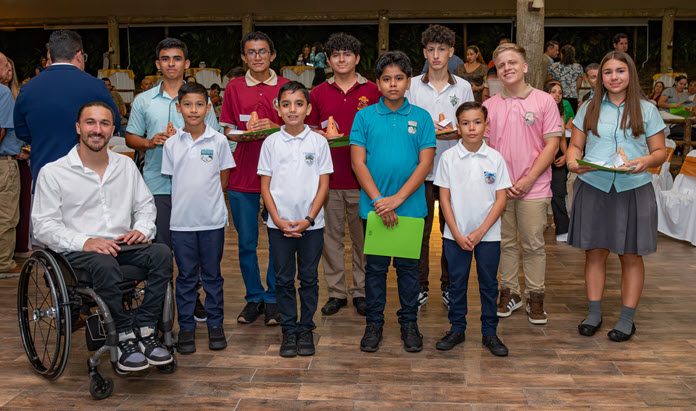She came to Costa Rica to found an environmental school for children—and today, she’s still teaching, but in a different kind of classroom.
Who better to remind humanity of its power for good and ill than the animals who roam the streets, forgotten or abused, in a country renowned for its wildlife?
Who better to illustrate—then heal—the gap that lies between us and empathy?
Who better to teach us the respect and strength we’ll need for so many other things, for so many sadnesses? The muscles that we build by rescuing a cat, by repairing a dog’s broken leg, by adopting and restoring, are the same muscles we need to resist violence or protect the planet. They’re the muscles you build by standing up for someone else when you could sit down and look away.
Kim, Luna, Negra, Coqueta, Arturo: one animal at a time, one name, one pair of eyes, one hopeful nose cold in the hand. She probably never thought her path would take her to this distant home in Costa Rica, a place to push restart, a place to teach and learn. A place where the best of humanity cures its worst. A place to remember that no story is every over—not a dog’s, not our own, not our planet’s—as long as kindness lives.
Inspired by the story of the Animales de Asis Association and its founder, U.S. citizen Karin Hoad, as relayed by Karolina Benavides of the association. Animales de Asis is a private, no kill sanctuary founded by Karin in 2000 in San Rafael de Heredia; it can shelter up to 200 dogs and cats. The association’s work can be supported by donation (including U.S. tax-deductible donations through Amigos of Costa Rica), volunteering, sponsoring a senior animal, or adopting an animal. Learn more on the Animales de Asis website.
What’s a Rich Text element?
The rich text element allows you to create and format headings, paragraphs, blockquotes, images, and video all in one place instead of having to add and format them individually. Just double-click and easily create content.
Static and dynamic content editing
A rich text element can be used with static or dynamic content. For static content, just drop it into any page and begin editing. For dynamic content, add a rich text field to any collection and then connect a rich text element to that field in the settings panel. Voila!
A rich text element can be used with static or dynamic content. For static content, just drop it into any page and begin editing. For dynamic content, add a rich text field to any collection and then connect a rich text element to that field in the settings panel. Voila!
Link like this
A rich text element can be used with static or dynamic content. For static content, just drop it into any page and begin editing. For dynamic content, add a rich text field to any collection and then connect a rich text element to that field in the settings panel. Voila!
How to customize formatting for each rich text
Headings, paragraphs, blockquotes, figures, images, and figure captions can all be styled after a class is added to the rich text element using the "When inside of" nested selector system.
What’s a Rich Text element?
The rich text element allows you to create and format headings, paragraphs, blockquotes, images, and video all in one place instead of having to add and format them individually. Just double-click and easily create content.
Static and dynamic content editing
A rich text element can be used with static or dynamic content. For static content, just drop it into any page and begin editing.
For dynamic content, add a rich text field to any collection and then connect a rich text element to that field in the settings panel. Voila!
How to customize formatting for each rich text
Headings, paragraphs, blockquotes, figures, images, and figure captions can all be styled after a class is added to the rich text element using the "When inside of" nested selector system.





